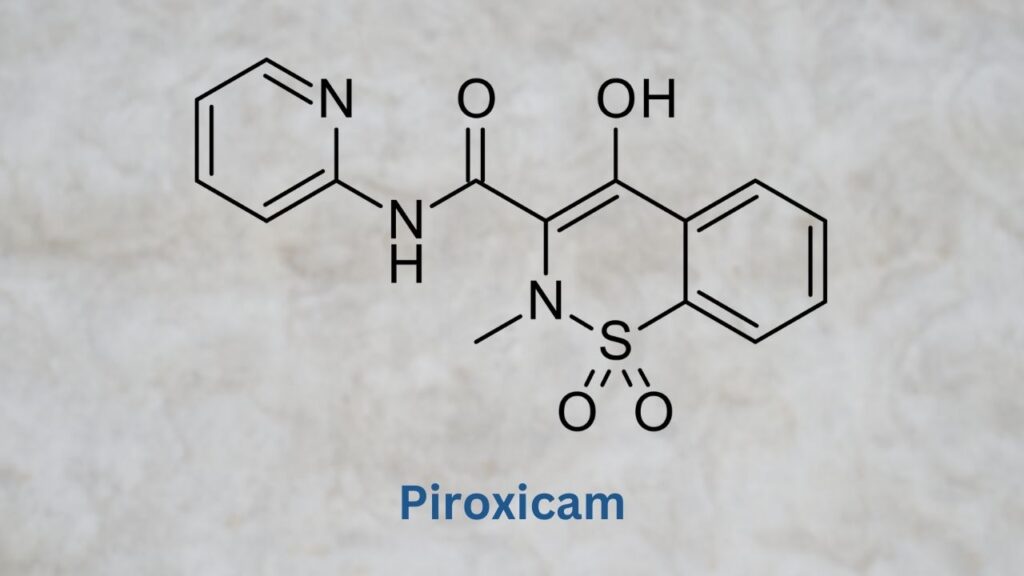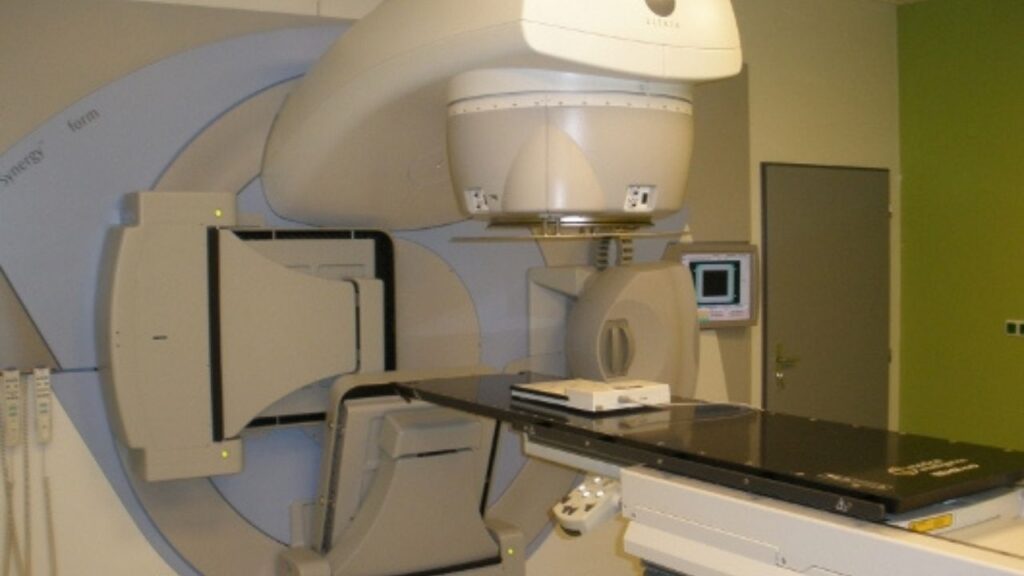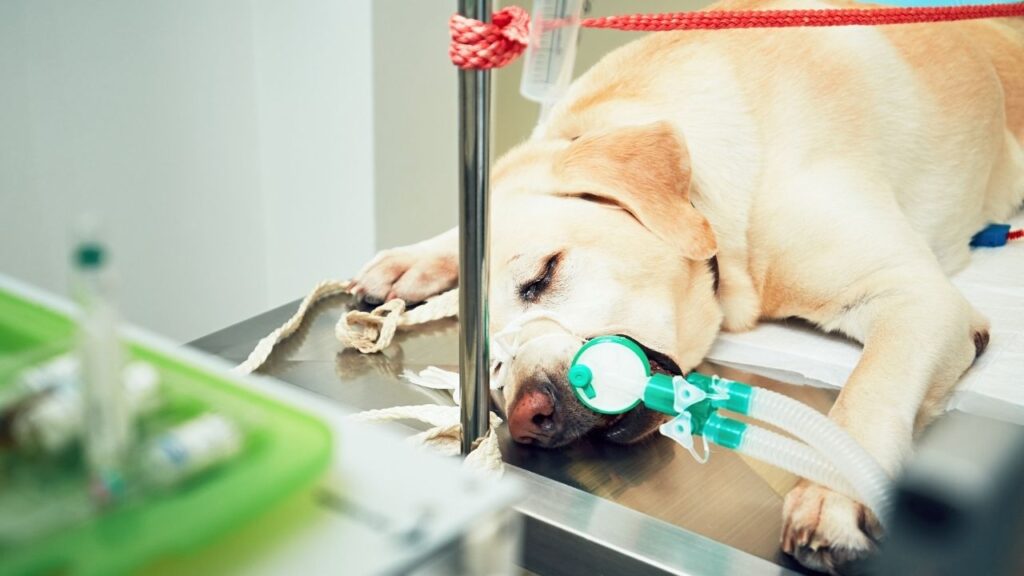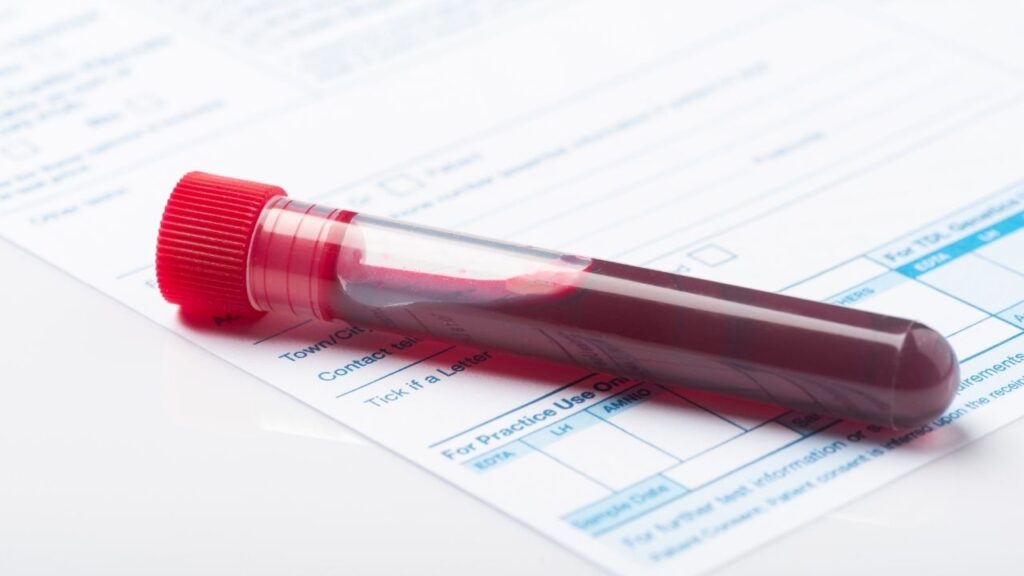The Cadet BRAF Urine Test is an easy, non-invasive screening tool for cancer of the urinary tract. Clinical signs of urinary tract cancer often overlap with those of recurrent urinary tract infections, so this highly sensitive test aids in early detection to help ensure successful treatment.
Key Takeaways
- A Cadet BRAF test is a urine test that detects whether a genetic mutation for TCC (transitional cell carcinoma, a common bladder cancer) is present.
- You need to collect 40 ml of urine for a BRAF test. Large dogs might deposit that in one go, but you can also collect urine over several days if necessary.
- The urine sample does not need to be refrigerated, just kept at room temperature and out of direct sunlight.
- The Cadet BRAF test is 95% accurate for TCC which contains the BRAF genetic mutation. Most TCC cases, about 85% of the total, contain this genetic mutation, but the other 15% do not.
- If your dog is BRAF positive, it means that a genetic mutation associated with TCC is present, and your dog’s bladder problem is more likely to be cancer than a UTI.
Why Veterinarians Use the Cadet BRAF Urine Test
The Cadet BRAF urine test is 95% accurate in detecting transitional cell carcinoma (TCC) that contains cells with the BRAF genetic mutation.1
- Transitional cell carcinoma, or urothelial carcinoma (UC), is the most common type of canine bladder cancer.2,3
- Bladder cancer in dogs is rare, comprising only 2% of all canine cancers.2
- A negative Cadet BRAF urine test can mean either that it is not TCC or that it is a form of TCC that does not carry the mutation being tested for (BRAF), in which case further testing may be recommended.1
How This Test Works
This test looks for a common mutation in what’s known as the BRAF gene.
This highly sensitive test can detect the genetic material in as few as ten cancer cells.1
If that genetic material contains a mutation in the BRAF gene, other conditions that might have been causing the symptoms can be ruled out. TCC can be definitively diagnosed and treated.
This cancer is more common in some breeds of dogs, and the Cadet BRAF test can be used for screening in predisposed individuals after the dog reaches the age of six.6
What’s Involved
This is a super simple test that involves free catching of urine from your dog.
- You will use a special vessel with a preservative from the lab to catch urine as your dog pees.
- You can collect urine over several days if your dog doesn’t pee enough for a full sample in one go.
- The sample can be stored at room temperature out of direct sunlight.
- Once you have collected enough urine, the sample will be returned to the lab for testing.
When Vets Recommend the Cadet BRAF Urine Test for Dogs
Most veterinarians will suggest this test if they suspect bladder cancer is present. It can also be used as a screening test for bladder cancer in high-risk breeds (listed below) over the age of six years.6
This is a useful screening test to help your veterinarian discern whether your dog’s symptoms are caused by bladder cancer or urinary tract infections (UTI). Both cause the same symptoms, and UTIs often accompany urinary tract cancers.
UTI symptoms, which can also indicate transitional cell carcinoma, include:2,6
- hematuria—blood in the urine
- stranguria —straining to urinate
- dysuria—painful urination
- pollakiuria—unusually frequent urination
Most often, when veterinarians see UTI symptoms, they treat for UTI first. When cancer is present, treatment for the UTI will appear effective at first, but symptoms will recur after treatment. This will mimic a recurrent UTI.
Using the Cadet BRAF test, your veterinarian can tell if your dog suffers from a UTI or a specific type of bladder cancer.
Cadet BRAF Test Accuracy
Since the mutation in the BRAF gene occurs in about 85% of TCC cases, this relatively simple and highly sensitive test can quickly rule out a UTI.3,5
It used to be that radiography and ultrasounds were the only tools used to detect bladder masses. Expensive and invasive biopsies were previously the only option for a definitive diagnosis.7
Today, if diagnostic imaging (usually ultrasound) provides evidence of a possible bladder mass, the BRAF test is recommended.5
By utilizing a quick, non-invasive test such as the BRAF test, TCC can be diagnosed earlier, which offers better chances for effective treatment.7
Catching bladder cancer early is important, because:
- At presentation, 20% of these cancers have already metastasized. 6
- Surgery is often not an option, so a new method for early detection is a welcome addition to TCC care.
This test can also be used to follow up on the detection of a mass in the urinary tract or monitoring for a recurrence of TCC during or after chemotherapy.5, 6
Veterinary oncologist Dr. Brooke Britton explains why surgery is so often a no-go when it comes to bladder cancer on this listener line episode of DOG CANCER ANSWERS.
Screening Middle-Aged Dogs at High Risk for Bladder Cancer
If you have a dog aged six or older, your veterinarian might want to use the Cadet BRAF test as a screening tool to detect bladder cancer early and get better treatment outcomes.
Some dogs are at higher risk for TCC, including:1
- Scottish Terrier
- Beagle
- Shetland Sheepdog
- West Highland White Terrier
- Wire Fox Terrier
- Australian Cattle Dog
- American Eskimo Dog
- Australian Shepherd
- Bichon Frise
- Lhasa Apso
- Parson Russell Terrier
- Rat Terrier
The Scottish Terrier is suspected of having a strong genetic predisposition as this breed has about a twenty-fold higher risk of developing TCC than other dogs.2
The other breeds listed are three to five times more likely to develop TCC.2
The exact cause is unknown, but other than genetic predispositions, environmental factors are suspected to play a role in TCC development.2
How to Get the Best Results
Follow your veterinarian’s instructions for urine collection. As this is a free catch sample, the method is straightforward: hold the collector (a clean cup or another container) under your dog as he pees.
- The sample should be stored at room temperature out of direct sunlight.1
- It is recommended that the sample be collected in a clean container and then poured into the sample container for storage within fifteen minutes, followed by a gentle swirl to mix with the preservative solution.
How Much Urine You Need to Collect
The lab needs 40 ml of urine to conduct the test. While large dogs may provide the 40 ml required for the test in a single sample, multiple samples may be required from small dogs, and those can be collected over two to three days.5
It is highly recommended that this be done with free-catch urine and not cystocentesis, which is urine collection performed in a veterinary clinic using a needle inserted through the bladder wall. Cystocentesis will not provide as good a chance of catching the cancer cells. It also risks spreading cancer cells to new tissue if accidentally inserted through a tumor.
Smaller samples are workable, but higher volumes increase the chances of detection.5
Dr. Nancy Reese helps a listener understand her dog's bladder cancer diagnosis on DOG CANCER ANSWERS.
Home Care
No specific home care needs to be done during the urine collection process. Just have your dog pee in a clean cup.
Follow Up
There is no follow-up care from the test itself. However, there may be additional testing or treatment recommendations made based on the test result.
- While 85% of TCC are positive for the BRAF mutation, that leaves 15% that might go undetected by this test.
- Therefore, if the test is negative for BRAF, but TCC is still suspected, your veterinarian may suggest that you follow up with the BRAF PLUS test, which can detect other common changes in cells associated with TCC.
- The BRAF PLUS test detects DNA changes in dogs with clinical signs of TCC that are not positive for the BRAF mutation.9
- Typically, this can be done on the same urine sample.
When to Not Use the Cadet BRAF Urine Test
This test is specific for TCC and will not be useful for any other cancer type.
Where to Get This Test
Your veterinarian can provide the laboratory test kit with instructions. The sample will be sent to a lab in the U.S. for testing.
Safety and Side Effects
There are no safety concerns or side effects for this test.
Cost
The exact cost of the Cadet BRAF test will vary depending on your location and the individual veterinary facility, but you should budget approximately $400.
- Cadet® BRAF-plus – antech diagnostics test service. Antech Diagnostics. https://www.antechdiagnostics.com/cadet-braf-plus/. Published November 15, 2022. Accessed January 15, 2023.
- Knapp D. Canine Bladder Cancer. Purdue University College of Veterinary Medicine . https://www.vet.purdue.edu/pcop/files/docs/CanineUrinaryBladderCancer.pdf. Published April 2013. Accessed January 15, 2023.
- Aupperle-Lellbach H, Grassinger J, Hohloch C, Kehl A, Pantke P. Diagnostic value of the BRAF variant V595E in urine samples, smears and biopsies from canine transitional cell carcinoma. Tierarztl Prax Ausg K Kleintiere Heimtiere. 2018;46(5):289-296. doi:10.15654/TPK-180554
- Decker B, Parker HG, Dhawan D, et al. Homologous mutation to human BRAF V600E is common in naturally occurring canine bladder cancer—evidence for a relevant model system and urine-based diagnostic test. Molecular Cancer Research. 2015;13(6):993-1002. doi:10.1158/1541-7786.mcr-14-0689
- Chan C. A non-invasive urine test to help diagnose transitional cell carcinoma in dogs. The Pet Oncologist. https://www.thepetoncologist.com/blog/transitional-cell-carcinoma. Published January 9, 2021. Accessed January 15, 2023.
- Ettinger S. Urine luck: A new test for canine bladder and prostate cancer. DVM 360. https://www.dvm360.com/view/urine-luck-new-test-canine-bladder-and-prostate-cancer. Published July 29, 2019. Accessed January 15, 2023.
- Gentilini F, Palgrave CJ, Neta M, et al. Validation of a Liquid Biopsy Protocol for Canine BRAFV595E Variant Detection in Dog Urine and Its Evaluation as a Diagnostic Test Complementary to Cytology. Frontiers in Veterinary Science. 2022;9:909-934. doi:10.3389/fvets.2022.909934
- Mochizuki H, Shapiro SG, Breen M. Detection of BRAF mutation in urine DNA as a molecular diagnostic for canine urothelial and prostatic carcinoma. PLOS ONE. 2015;10(12). doi:10.1371/journal.pone.0144170
- Cadet® BRAF and BRAF-plus now available exclusively through Antech Diagnostics. Antech Diagnostics. https://www.antechdiagnostics.com/press-release/cadet-braf-and-braf-plus-now-available-exclusively-through-antech-diagnostics/. Published January 20, 2022. Accessed January 15, 2023.
Topics
Did You Find This Helpful? Share It with Your Pack!
Use the buttons to share what you learned on social media, download a PDF, print this out, or email it to your veterinarian.









